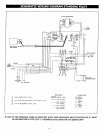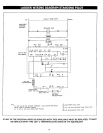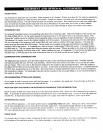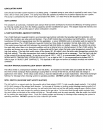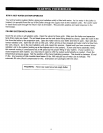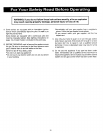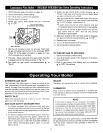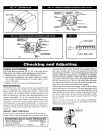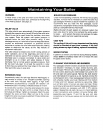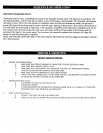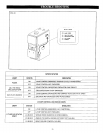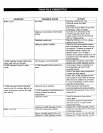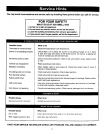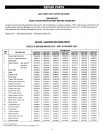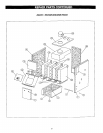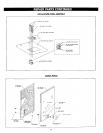
BURNERS
A visual check of the pilot and main burner flames should
be made at least once each year, preferably at the beginning
of the heating season. See page 22
RELIEF VALVE
This valve should open automatically if the system pressure
exceeds the pressure rating (usually 30 psi) of the relief valve.
Should it ever fail to open under this condition, shut down
your system. Drain the system until system pressure is
reduced below the relief valve pressure rating. If valve
discharge occurs, or if valve fails to open as described above,
contact an authorized contractor or qualified service
technician to replace the relief valve and inspect the heating
system to determine the cause, as this may indicate an
equipment malfunction.
This valve should be tested every month during periods of
boiler operation, and at the beginning and end of any
extended non-service period. Prior to testing, make certain
discharge pipe is properly connected to valve outlet and
arranged so as to contain and safely dispose of boiler
discharge. Test at normal system operating pressure. Hold
the trip lever fully open for at least five seconds in order
to flush free any sediment that may lodge on the valve seat.
Then permit the valve to snap shut.
EXPANSION TANK
As previously noted, this tank may become waterlogged, or
may receive an excess of air. Frequent automatic opening
of the relief valve indicates water logging. A high boiler
temperature accompanied by unusually low radiation unit
temperature (and "knocking") indicates excess air in tank.
To correct either condition, close the valve between the boiler
and the tank. Drain the tank until it is empty Check all the
tank plugs and fittings Tighten as necessary Open the valve
between the boiler and tank. Water will rise to the normal
height in the tank if you have an automatic fill valve (otherwise,
manually refill the system).
BOILER FLUE PASSAGES
Under normal operating conditions, with the burners properly
adjusted, it should not be necessary to clean the boiler flue
gas passages. However, to assure trouble-free operation, we
recommend that you have the flue passages, burner
adjustment, and operation ofthe controls checked once each
year by a competent Service Technician.
Before the start of each season (or whenever system has
been shut down for some time) recheck the whole system
for leaks.., and recheck the boiler and vent pipe for leaks.
Replace or patch any boiler seals that are faulty
VENT PIPE
The venting of this unit is very important and the piping
should be checked at least once a season. If the vent
piping shows any sign of leaking, replace It immediately.
WATER SYSTEM
If system is to remain out of service during freezing weather,
always drain it completely (water left in to freeze will crack
the pipes and/or boiler).
CLEANING YOUR BOILER AND BURNERS
Flue passages between sections should be examined yearly
and cleaned if necessary To clean, remove burners, pilot,
and vent pipe. Remove top and front jacket panels. Remove
the two screws attaching the intermediate front panel to the
left and right side jacket panels. Remove the draft diverter
and intermediate front panel as a unit. Carefully remove the
cerafelt gasket strips. Clean passageways between sections
with a flexible handle wire brush. Remove dirt from bottom
of boiler and from between sections by vacuuming. Make
sure all flame ports in burners are open and clear. Shake
out or blow out all loose dirt in burners. Reseal seams between
adjacent sections as necessary with 400 F RTV silicone
sealant. Reassemble all parts. Be sure to check tightness
of pilot connections and condition of burner flames after
reassembly (see Figures 17 and 18}. Be sure vent pipe
connections to chimney are secure and no obstructions are
present.
23



